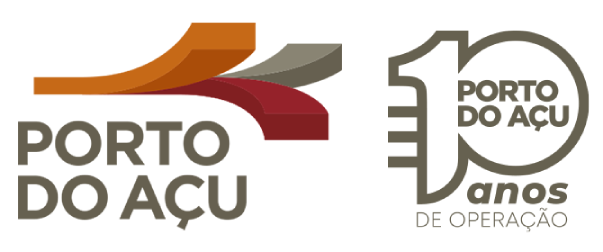“This first shipment denotes a milestone for the port. A number of clients are already in production, but Anglo American’s shipment is the first. We are now focused on starting up shipments at Terminal 2 by the end of year”, enthused Eduardo Parente, CEO of Prumo Logística.
One of the milestones reached last week was completing the installation of 28 signalling buoys, which help ships navigate down the channels. 18 buoys were installed at T1 and 10 at T2.
The submersible articulated buoys remain under the water line, containing a rod and an external lantern. This type of buoy provides greater safety for navigation as it is fixed and cannot shift from its original position, as is generally the case with floating buoys. With a form of anchor at its base, which is attached to the bottom of the channel, in addition to a lantern on the surface, which provides better viewing conditions for ships, this type of buoy means the use of alignment lamps is not necessary. The installation work took around two months and is supported by vessels, which released the buoys which have a length of between 12 and 14 meters and weigh around 28 tons each.
Another technology in place at Açu Port is the VTS radar system, which enhances navigation safety in the T2 channel. Installed at CCOTM (Operational Maritime Traffic Control Centre), the equipment works as a 360° scanner and detects a whole range of small vessels in real-time, such as support vessels and fishing boats, in addition to surfers. The radar has a range of some 25 nautical miles, or 50 km. Açu Port is the first port in Brazil to have this system, which provides a series of information such as location, speed, size, draught, cargo type and flag of the vessels. Monitoring is performed through surveillance cameras and sensors, which receive data that permit the monitoring and controlling of marine traffic.
Wharfline
In September Prumo also concluded the construction of the wharfline of the Multicargo Terminal (TMULT), its own terminal, which has a length of 500 meters and depth of 14.5 meters. Created to handle the general cargo of companies located at the port and other clients, the terminal is waiting for its operating license, which it expects to receive in the first half of 2015. In the initial stage TMULT has a handling capacity of approximately 4 million tons of solid bulk and general cargo.
Another important achievement was the manufacturing of the last concrete block that will comprise the breakwater of T2, which will consist of a total of 42 blocks. These blocks were produced by the Kugira, the largest concrete block production equipment in the world, owned by Spain’s Acciona, which had been at Açu Port since 2012. Construction of the T2 breakwater is forecast for completion at the start of next year.
About Açu Port
With 17 km of piers which can simultaneoulsy moor up to 47 vessels, Açu Port is located in São João da Barra, in northern Rio de Janeiro. Occupying 90 km² the venture is comprised of Terminal 1 (T1 – offshore) and Terminal 2 (T2 – onshore).
T1 consists of a 3-km access bridge, a tugboat pier, 9 oil and iron-ore piers, approach channel and turning basin. The terminal will have a total wharfline of 4 km.
T2 is located around a 6.5 km long, 300 meter wide approach channel with a depth of 14.5 meters. Works are taking place on the site for the construction of the approach channel, turning basin and implementation of the transmission line. With a wharf line of over 13 km, T2 will handle project cargo, coal, bauxite, vehicles, liquid and solid bulk and oil.

